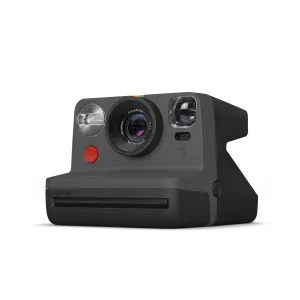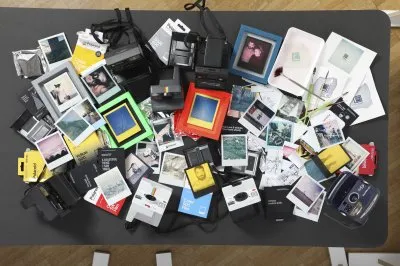Polaroid
Polaroid
Polaroid - the name of the brand is not only synonymous with instant cameras and photographs, but also with a cool retro aesthetic, spontaneity and the charm of imperfection.
Polaroid - the photo revolution
With their introduction in 1947, Polaroids turned the world of photography on its head. Suddenly, films did not have to be developed in a laboratory. All it took was the press of a button to hold a finished picture in your hands a few moments later.
The story behind the brand
The physicist Edwin Herbert Land founded the Polaroid Corporation in Cambridge, Massachusetts, back in 1937. It initially marketed the polarising film "Polaroid filters" developed by Land and patented in 1933. The company's big coup was yet to come: at the 1947 meeting of the Optical Society of America, Land presented a camera that used a rapid development process for the first time. A finished picture was ready in just 60 seconds.
Fun fact: According to legend, it was the physicist's daughter and her desire to be able to look at photographs immediately after taking them that prompted Land to devote himself to the invention of an instant camera.

From a world first to a retro project
The images from the camera, known as the Land Camera, were initially black and white and later sepia-coloured. Instant photography only became colourful in 1963 with the introduction of Polacolor film.
Another fundamental innovation was introduced in 1972 with the SX-70 integral film: all the components required for development were now contained within the image. The camera of the same name was also the first foldable SLR model on the market.
At the beginning of the 1980s, the 600 film followed, making it easier for novice photographers to take instant pictures. Compared to its predecessors, the significantly more light-sensitive film is still available today and is compatible not only with the original cameras of the time, but also with the new i-Type models.
With the advent of digital photography in the 1990s, Polaroid's successful times were followed by less favourable ones. Instant photography lost importance. The company's first insolvency was followed by a second after several takeovers. It is thanks to the start-up Impossible Project that this did not mean the end of Polaroid instant photography. In 2008, it bought the film factory in Enschede, resumed production and, not least, developed new ideas to bring instant cameras into the here and now.

What makes Polaroids special?
In contrast to digital photographs, the results achieved with an instant camera can hardly be planned. The pictures cannot be edited. And if you want to reproduce them, you have to scan or photograph them first.
So how is it that the pictures with their characteristic frame still exert such a great fascination? The most obvious answer is surely that Polaroid instant photos not only offer a large dose of nostalgia to their digital competitors, but also an even greater authenticity. Every picture taken has something that is rarely found in the digital world: it is unique.

Polaroid cameras: the Go and Now+ instant cameras
Warhol is said to have always carried his Polaroid camera with him. Always ready to press the shutter button and enrich the world of art with another photograph. So he would almost certainly have enjoyed the Polaroid Go.
Thanks to its compact format, the brand's smallest instant camera is easy to take with you wherever you go. It offers you a precise flash system, a selfie function in which the viewfinder window acts as a mirror and a self-timer. If one instant photo is not enough for you, take two in one go with the double exposure mode.
Even if you like the charm of an analogue instant camera, but still don't want to do without digital finesse, Polaroid has a solution: the Polaroid Now+ i-Type. Thanks to a comprehensive app, it offers you additional options for customising your photos. From self-timer to long exposure, numerous functions invite you to try out and experiment.
Films for Polaroid cameras
The calculation is simple: no picture without film. Go for colour or black and white films, variants with a white or colourful frame, with a square or round image section. The only important thing is that your choice is compatible with the camera.
Which film is suitable for which camera?
|
Film |
Now |
Now+ |
600 |
SX-70 |
I-2 |
Go |
|
i-Type |
x |
x |
|
|
x |
|
|
600 |
x |
x |
x |
|
x |
|
|
Go |
|
|
|
|
|
x |
|
SX-70 |
|
|
|
x |
|
|
Top tip: Store the films for your instant camera in the fridge and bring them to room temperature before use. Try to use up any film you start within eight weeks if possible.
For more information and tips, take a closer look at our Polaroid film brand page.
